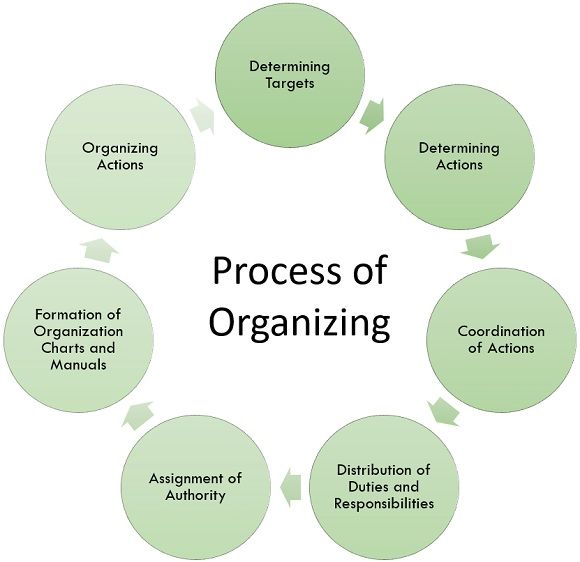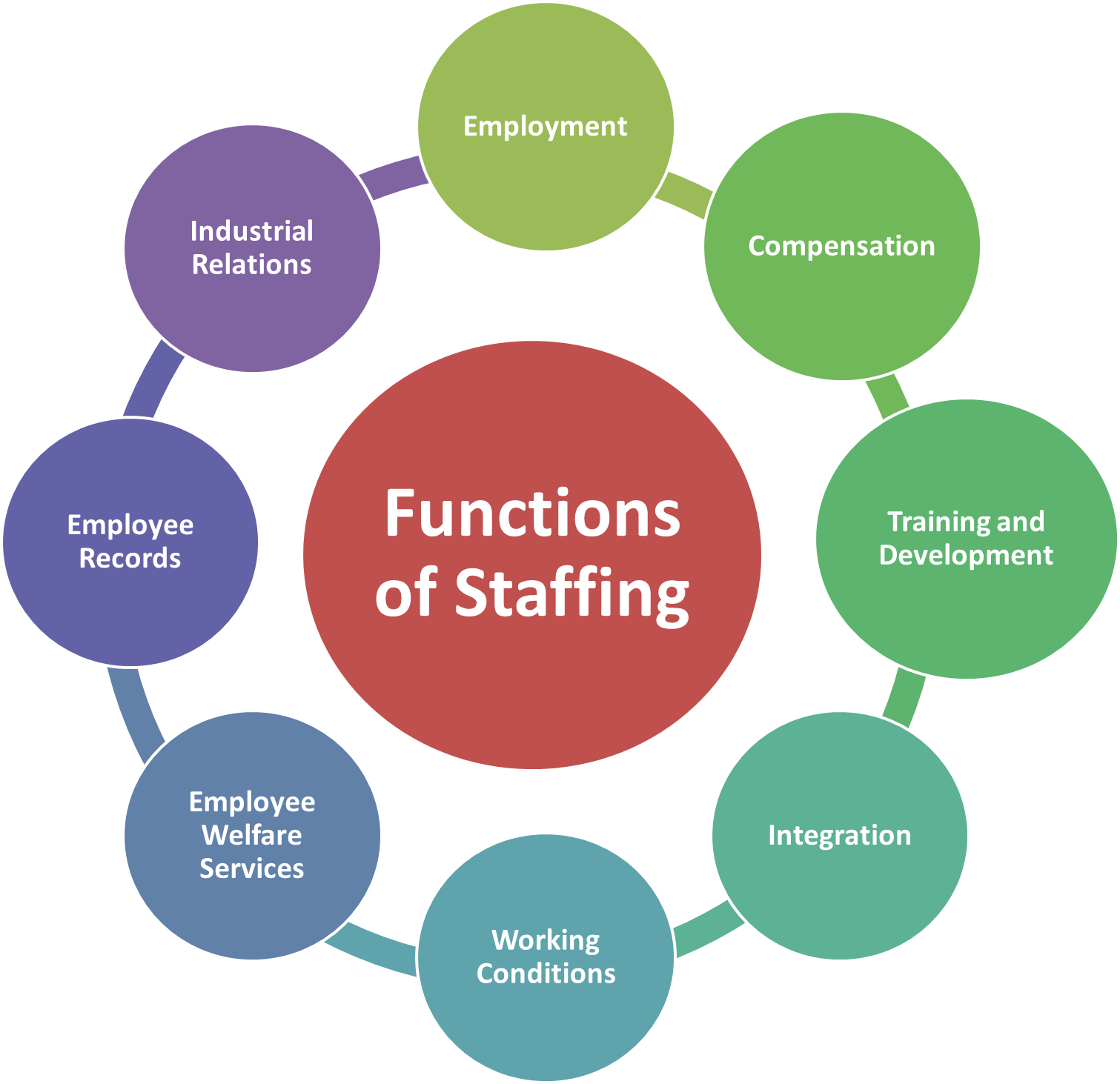Organizing:
1. What is the significance of organizing in the management process?
Ans. Organizing is a fundamental function of management, which involves arranging resources, assigning tasks, and coordinating activities in a structured manner to achieve organizational goals efficiently. The significance of organizing lies in its ability to facilitate coordination, streamline communication, minimize duplication of efforts, and promote specialization, leading to increased productivity and overall effectiveness of the organization.
2. What are the different steps involved in the process of organizing?
Ans. The process of organizing involves several steps, including:
- Identification and classification of activities to be performed.
- Grouping of similar activities into departments.
- Assigning tasks to individuals or groups.
- Establishing relationships and coordination among different departments.
- Delegating authority and responsibility to appropriate levels.
- Establishing channels of communication and decision-making.
3. Explain the concept of departmentalization and its importance in organizing.
Ans. Departmentalization refers to the process of grouping similar activities and functions into departments based on common characteristics, such as product lines, customer segments, geographic regions, or functional areas. Departmentalization helps in achieving specialization, coordination, and efficient allocation of resources. It also facilitates the identification of performance metrics and the evaluation of departmental performance.
4. How does delegation of authority aid in the process of organizing?
Ans. Delegation of authority is an important aspect of organizing, as it enables managers to distribute decision-making authority and responsibility to lower-level employees, thereby empowering them to perform their roles effectively. The delegation also enables managers to focus on higher-level tasks, such as planning and strategy development, and ensures that tasks are completed in a timely and efficient manner.
5. What are the different types of organizational structures that can be adopted by a company and how do they differ from each other?
Ans. There are different types of organizational structures that a company can adopt, depending on its size, goals, and environment. Some of the common organizational structures are:
- Functional structure: In this type of structure, departments are organized based on functions, such as finance, marketing, and production.
- Divisional structure: In this type of structure, departments are organized based on products, services, or geographic regions.
- Matrix structure: This structure combines functional and divisional structures, allowing for more flexibility and coordination.
- Network structure: In this type of structure, the organization outsources many of its functions to external partners and focuses on core competencies.
- Flat structure: This structure has few hierarchical levels and emphasizes collaboration and autonomy.
Each type of structure has its advantages and disadvantages, and the choice of the structure depends on several factors, such as the organization's size, complexity, and strategic goals.
Staffing:
1. What are the different methods of recruitment? Discuss their advantages and disadvantages.
Ans. Methods of Recruitment:
a) Internal recruitment: It involves filling job vacancies with the existing employees of an organization. Advantages include higher employee morale, lower recruitment costs, and better retention. Disadvantages include a lack of diversity and potential for internal politics.
b) External recruitment: It involves filling job vacancies from outside the organization. Advantages include a larger pool of candidates and new perspectives. Disadvantages include higher recruitment costs and the potential for cultural mismatches.
c) Employee referrals: It involves encouraging current employees to refer potential candidates for job vacancies. Advantages include a larger pool of qualified candidates and reduced recruitment costs. Disadvantages include the potential for favoritism and lack of diversity.
d) Campus recruitment: It involves hiring fresh graduates from educational institutions. Advantages include a pool of candidates with up-to-date knowledge and lower recruitment costs. Disadvantages include lack of experience and potential for mismatch with organizational culture.
2. How can an organization ensure the effectiveness of the selection process?
Ans. Ensuring the effectiveness of the selection process:
An organization can ensure the effectiveness of the selection process by:
a) Defining the job requirements clearly.
b) Choosing appropriate selection methods.
c) Ensuring that the selection process is fair and unbiased.
d) Ensuring that the selection process is consistent across all candidates.
e) Conducting thorough background checks.
f) Evaluating the effectiveness of the selection process regularly.
3. What are the factors affecting the staffing process? How can an organization overcome them?
Ans. Factors affecting the staffing process and how to overcome them:
a) Availability of talent: Organizations can overcome this by developing a strong employer brand and offering competitive compensation and benefits.
b) Economic conditions: Organizations can overcome this by being flexible in their staffing plans and adapting to changes in the economic environment.
c) Demographic changes: Organizations can overcome this by diversifying their talent pools and being proactive in recruiting underrepresented groups.
d) Technological changes: Organizations can overcome this by investing in training and development programs to upskill existing employees and recruiting employees with the necessary technical skills.
4. What is the difference between training and development? How can an organization determine the training needs of its employees?
Ans. Difference between training and development:
Training is a process of imparting knowledge and skills to employees to help them perform their current job better. Development, on the other hand, is a process of preparing employees for future roles and responsibilities in the organization.
5. What are the different methods of performance appraisal? Discuss their relative merits and demerits.
Ans. Methods of Performance Appraisal:
a) Graphic rating scale: It involves evaluating employees based on a set of criteria using a numerical scale. Advantages include easy administration and consistency. Disadvantages include lack of clarity and potential for bias.
b) 360-degree feedback: It involves collecting feedback from multiple sources, including managers, peers, and subordinates. Advantages include a comprehensive view of an employee's performance. Disadvantages include the potential for personal biases and a lack of anonymity.
c) Behaviorally anchored rating scale (BARS): It involves evaluating employees based on specific examples of behavior. Advantages include a clear definition of performance criteria. Disadvantages include the potential for subjective interpretation.
d) Management by objectives (MBO): It involves setting specific objectives and evaluating employees based on their achievement. Advantages include a clear focus on results. Disadvantages include the potential for inflexibility and difficulty in measuring subjective criteria.
Overall, the choice of performance appraisal method depends on the organization's specific needs and goals.






0 Comments